Pool glasses: purpose, types and features of choice

Today, every swimming lover uses special goggles that protect the eyes from water pressure and the ingress of harmful elements on their mucous membranes. In this material, you will get acquainted with the basic functions of glasses for the pool, as well as with their types and features of choice.
Appointment
Every professional swimmer, as well as an amateur swimmer, has good swimming goggles in their arsenal. The main function of such accessories is, of course, to protect the athlete's eyes from water streams. In swimming conditions, the eyes of a person without special glasses can suffer from several detrimental factors at once.
- In the aquatic environment, the human eyeball suffers from the effects of changes in atmospheric pressure. This leads to blurry images and reddening of the whites of the eyes.
- The different composition of water can negatively affect the condition of the mucous membrane. For example, salt water from the sea can irritate the eyes. Chlorinated pool water has the same effect, but much faster.
- A layer of air between the eyeball and the glasses helps maintain clear vision and optimizes pressure readings.
- Glasses, on the other hand, are able to hold back pressure from the water environment and do not allow aggressive elements to enter the cornea of the eye.

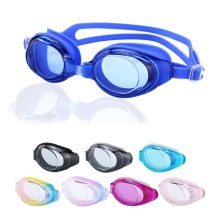
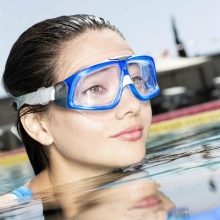
Lens colors
Many people choose lenses of different colors and do not even suspect that their shade directly affects the usability of glasses. Today on the market you can find clear, tinted or colored lenses - each of these options is more or less suitable for certain sailing conditions.
Tinted
The group of tinted lenses includes models made of dark or specially tinted material - in fact, this is a direct analogy with all known sunglasses.
Tinted lenses perform best at sea or other open bodies of water... These lenses protect the swimmer's eyes from the glare of the sun and allow better orientation in well-lit water.
There is one peculiarity in using tinted or dark lenses - low light increases the pupil of the eye, which makes it more vulnerable to harmful ultraviolet rays. That is why lenses must have a special UV filter.

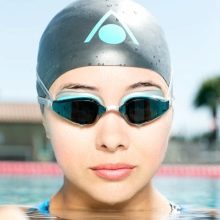
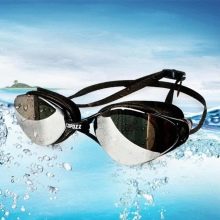
Transparent
This group includes standard, clear lens options that do not in any way protect the eyes from sun glare and enhanced light, but also do not distort real lighting.
With clear lenses, it is advised to swim exclusively in indoor pools with stable and not particularly bright lighting.

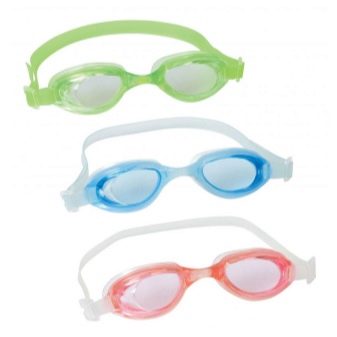
Colored
Recently, it is the color options for glasses that have become popular. It is believed that certain colors can have an additional effect on human pupils.
- Blue... Blue and azure lenses can simultaneously slightly darken glare while still providing excellent visibility. Through the lenses of blue tints, you will notice all underwater objects.
- Pink tones. Pink will give more contrast to objects in the water. This means that in good lighting conditions, pink lenses will add even more light to everything, and in dark conditions, they will add darkness. It is better to wear pink lenses when swimming in rivers and pools, the sea water for such lenses will be too dark.
- Yellow. Yellow focuses on specific objects in the water. These lenses will soften bright cold light and give a little more light when swimming in the dark.
- Mirrored... These lenses have a special coating that reflects even the most intense sunlight. Despite the outer mirror surface, the swimmer himself sees all underwater objects through a transparent lens.
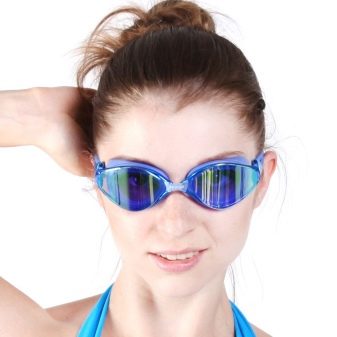

Modern
This group includes modified lenses with special coatings, which can not only protect the eyes from the sun, but also change their color depending on the lighting.
- Polarizing... These are incredibly durable and durable lenses that effectively protect your eyes from even the most intense sunlight. Lenses of this type are recommended for use in open areas.
- Photochromic. These are the newest and in their own way revolutionary lens models - they are able to change the color of their coating depending on the lighting conditions in the room. So, indoors, these glasses will be more transparent, but in open areas they become darker.
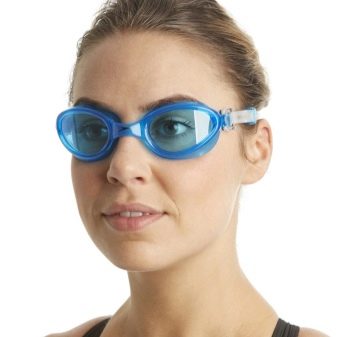
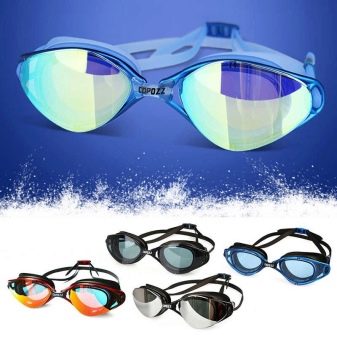
Views
Professional athletes distinguish only 4 main types of swimming goggles. Each of them is intended for use in specific conditions.
Starting
These glasses have several unofficial names - some call them "glass", others - "Swedes". Starting models are today used exclusively by professional swimmers and only during competition or training before performances.
A key feature of all starting goggles is a rigid, literally pressing on the eye fit - in these models, the additional soft lining may be completely absent. Most often it is a thin, rubber or silicone cuff. In addition, accessories of this type have lenses with a reduced area as well as an oblique, prismatic shape. This design allows you to minimize water resistance, eliminate goggles from shifting and increase the swimmer's hydrodynamics.
To make such models better attached, they are usually equipped with a double strap at once, which provides increased fixation on the head. Starter models are always sold fully disassembled.

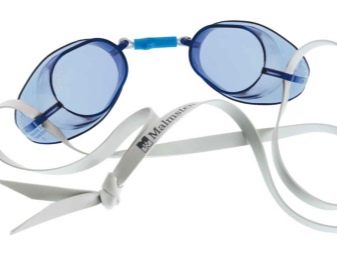
Training
Unlike starting training models, they are much more comfortable and can be used both during training and in amateur swimming in nature. These goggles are equipped with a soft and thick rubber or silicone gasket or seal that reduces pressure on the eyes and creates a feeling of maximum comfort.
In addition, the training models are equipped with wider lenses with a much wider field of view.
In general, such goggles are suitable for swimming in absolutely any conditions, but they are not suitable for competitions where maximum speed is required.


With diopters
This group includes all types of glasses with special lenses designed specifically for people with poor or impaired vision. Usually these are training models where there is the possibility of changing lenses.
When choosing such glasses, athletes are usually guided by the diopters of the lenses they wear in everyday life. Such models, as a rule, are made to order., since they may require a different number of diopters for both eyes.
Today's technologies in the manufacture of swimming goggles make it possible to fully compensate for the visual impairments of a particular person.
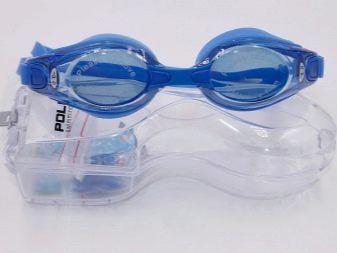

Glasses-masks
Goggles in the form of masks are the least popular option among both professional swimmers and amateurs. They are distinguished by the increased size of the lenses and, when put on, can even cover more than half of the entire face. Obviously, these models are usually used when swimming in open and shallow water.
An obvious plus of these accessories is the increased viewing angle, as well as reduced pressure on the area around the eyes. In addition, a denser air cushion is formed in the masks.
Often, masks are equipped with an additional coating that protects the lenses from fogging, and the eyes from exposure to UV rays.
It is noteworthy that today there are both male and female models of such glasses.
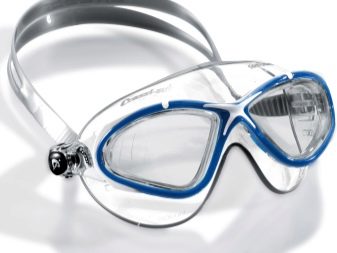
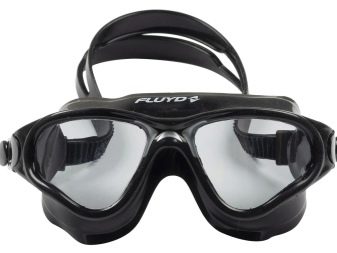
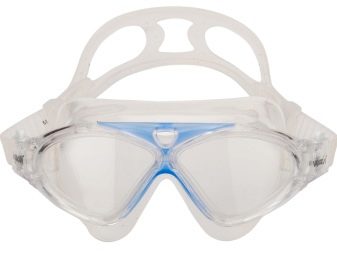
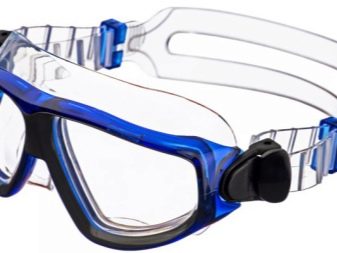
Modern models
Among the most popular manufacturers for the highest quality swimming goggles, companies such as Speedo, Tyr, Arena, Zoggs and Aqua Sphere can be distinguished.
Below you will find a short ranking of the highest quality starting, training models and other swimming goggles.
Starting
Among the starting options are Arena Cobra Core Mirror and Aqua Sphere Kaiman.
- Arena Cobra Core Mirror. These glasses are used by athletes participating in even world-class competitions. Main advantages: anti-fog coating, wide lenses, hypoallergenic frame, nice silicone strap, excellent protection from light glare. There is only one drawback - the high price.
- Aqua Sphere Kaiman. A versatile model that is suitable for training both in open waters and in the pool. It has a comfortable lens shape, anti-fog coating, a soft and sealed shutter, and also exerts minimal pressure on the skin.
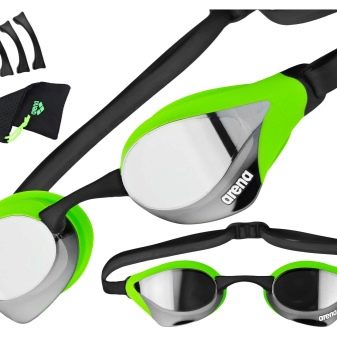

Training
There are a huge number of quality training glasses on the market, and therefore it makes no sense to consider certain models here. Training accessories with an ideal price-performance ratio are the Speedo Aquapulse, Arena Tracks Mirror and Joss YD3000.


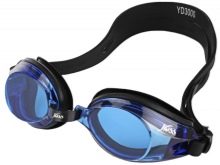
With diopters
It is not so easy to choose good glasses with diopters - such models are made by only a few brands. Of the highest quality models, we can single out the Whale Y0703 (CF-703) and Speedo Aquapure Optical Gog Af models.
- Whale Y0703 (CF-703). Despite its low cost, this model is used by both amateurs and professionals. Pros: only -1.5 diopters, soft frame and elastic strap do not put pressure on the bridge of the nose, have a relatively small size and are made in neutral black.
- Speedo Aquapure Optical Gog Af. Exclusively female model with a maximum optical power of -8 diopters. The model is close to the eyes, does not leave circles, has flexible frames and purple lenses that effectively reflect glare.

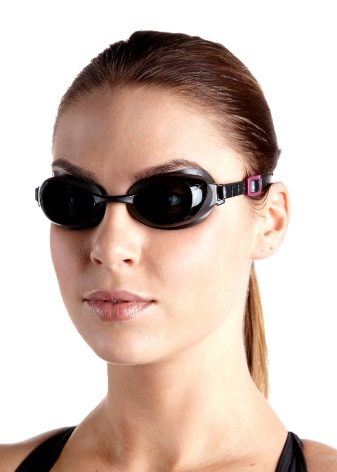
Masks
Among the masks, the Tyr Magna Swim Mask Lgmsma model can be distinguished. These are quite expensive but stylish swimming goggles with a hypoallergenic frame, wide viewing angle and high-quality fastening in the form of easily adjustable clips. The model is available in several neutral colors, and therefore can be used by both men and women.
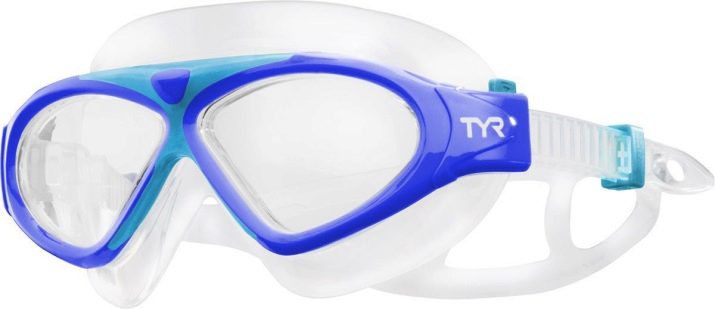
Selection Tips
Experts advise to be careful when choosing swimming goggles. This is especially true for children and young athletes who have just begun to get acquainted with the basics of swimming. Below are the main points to consider when choosing quality swimming goggles for both adults and children.
For adults
First of all, it should be understood that the main requirement for glasses is not comfort in use, and certainly not an attractive appearance, but the reliability of their adherence to the skin near the eyes. The goggles must ensure the conditions of complete tightness, preventing moisture from entering the cornea of the eye.
So, when choosing models for adults, follow the instructions below.
- Place the chosen model on your eyes for a couple of moments and press lightly. When you feel like the glasses are firmly attached to your skin, simply remove your hands. When if the model is held in front of the eyes without hand support, this option is definitely for you regarding the size.
- Enjoy the comfort of wearing an accessory - glasses should not bring you tangible pain. Pay particular attention to the sensations in the bridge of the nose or in the places of tension of the straps.
- Appearance Is the very last factor that you need to pay attention to. At this stage, it is also worth evaluating the color of the lenses of the selected model and inquiring whether they contain UV protection.
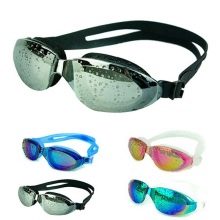


For kids
Choosing the best swimming goggle for a child is much more difficult - children's swimming goggles have a number of certain differences from adult models.
- In the case of children, it is precisely comfort in use... So, swimming goggles should not interfere with the child's view, press on the eyes or the bridge of the nose. Masks with a thickened edging show themselves best of all here.
- Besides, the accessory must be firmly attached to the skin and have a reinforced structure. In the course of intense games in the pool, glasses can simply fly off or even break, and therefore you should choose not only a comfortable, but also a durable, rigid model.
- When choosing gaskets it is better to stay on models with bulky rubber, neoprene or silicone edging... Such options will not only be securely attached to the skin, but will also increase the viewing angle in the water.
- If you want to choose a model with a large view, but do not find quality masks, you can try accessories where the lenses go beyond the temple area.
- It is most practical to focus on cast or one-piece models.... They have a stiffer, less flexible, but reliable structure that will keep glasses from breaking and mechanical stress.
- Be sure to check with your child whether it is convenient for him to wear this or that model.... As soon as a child turns 12 years old, he can safely try on adult versions of swimming goggles.
- Parents with children with impaired vision should consult an optometrist before buying. - he should advise which models with what diopters it is better to choose.
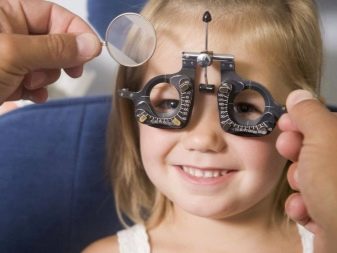
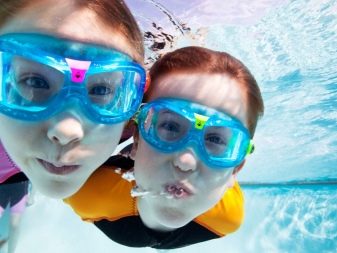
Wearing rules
It is not enough to choose and buy glasses correctly - you still need to put them on and use them correctly. The easiest example to consider is how a child is putting on swimming goggles.
- Just take the model in your hands, pass your hands between the elastic bands and pull the straps as tight as possible.
- Carefully put the accessory on your child's head. First, place the lenses over the eyes, and then place and fix the strap on the back of the child's head.
- Check the position of the glasses - the lenses should fit snugly against the skin and be directly in front of the child's eyes.If the size of the model turned out to be uncomfortable for the child, simply adjust the length of the strap at the back of the head using special clips or clips.
- If the child uses a swimming cap, the cap is put on first, and only then the accessory itself.
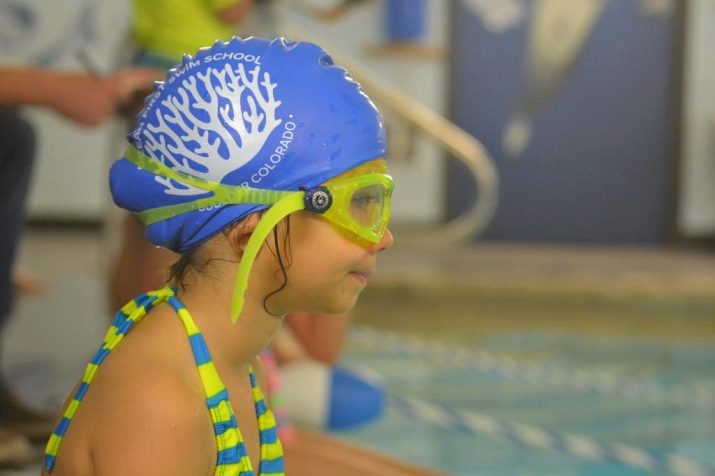
See below for how to choose swimming goggles.








